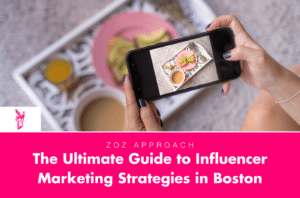Mirror, Mirror vs. Snow White and the Huntsman: Through a Media Relations Lens
The trend in the film industry over the past few years of remaking classic fairy tales is barreling towards an epic showdown between two modern-day interpretations of Disney’s Snow White and the Seven Dwarfs: Mirror Mirror, directed by Tarsem Singh, versus Snow White and the Huntsman, directed by Rupert Sanders. Or, at least, that’s what the media wants us to think.

Mirror Mirror is set to hit theaters March 30, 2012, and stars Julia Roberts as the evil queen, Lily Collins as fair Snow White and Armie Hammer as the dashing Prince Alcott. Rated PG, this quirky, whimsical take on Snow White alters the traditional fairy tale story line of the strong, domineering male swooping in to rescue the helpless damsel in distress, and instead depicts a strong female character who, in Collins’ words, “ends up saving the boy as much as the boy ends up saving the girl.”
Conversely, Snow White and the Huntsman depicts a much more ominous and gritty portrait of Snow White, filled with epic, action-packed chase and battle scenes and scenes that Sanders described in an interview as “quite a mental acid trip.” Due drop into theaters June 1, 2012, this film stars Kristen Stewart as Snow White, Charlize Theron as Queen Ravenna and Chris Hemsworth as the Huntsman.
Aside from both films being interpretations of the same story, the two could not be more different. In fact, from a PR standpoint, the two films are not even competitors. Mirror Mirror appeals to children, young teenagers and parents of young children, while Snow White and the Huntsman appeals to an older, more mature crowd who enjoy action films, sci-fi elements and darker themes. However, each camp will face the same challenge: to get the press to focus on the qualities of each film, rather than the coincidence of both films being released this spring.
There are already numerous articles online pinning one film against the other, as well as interviews asking Sanders asking about Mirror, Mirror, taking away space that could be used to cover Sanders’s film. Handling tricky task of coercing the media to abandon the more sensational approach to an article in favor of focusing on your client’s product involves two processes.
First, identify the most unique and the strongest characteristics of your product and brief everyone involved in the project on those qualities. This process will ensure that everyone involved in the project is on the same page and using the same verbiage when speaking to others about the project.
Second, train anyone being interviewed by the media how to answer questions about the “competition.” These answers should revert back to your product within the first sentence, and tell the reporter something unique about your product that he or she is unlikely to ask about and that prompts a follow-up question. Therefore, the focus of the article stays directly on your product, and you further differentiate your product from the “competition.”




